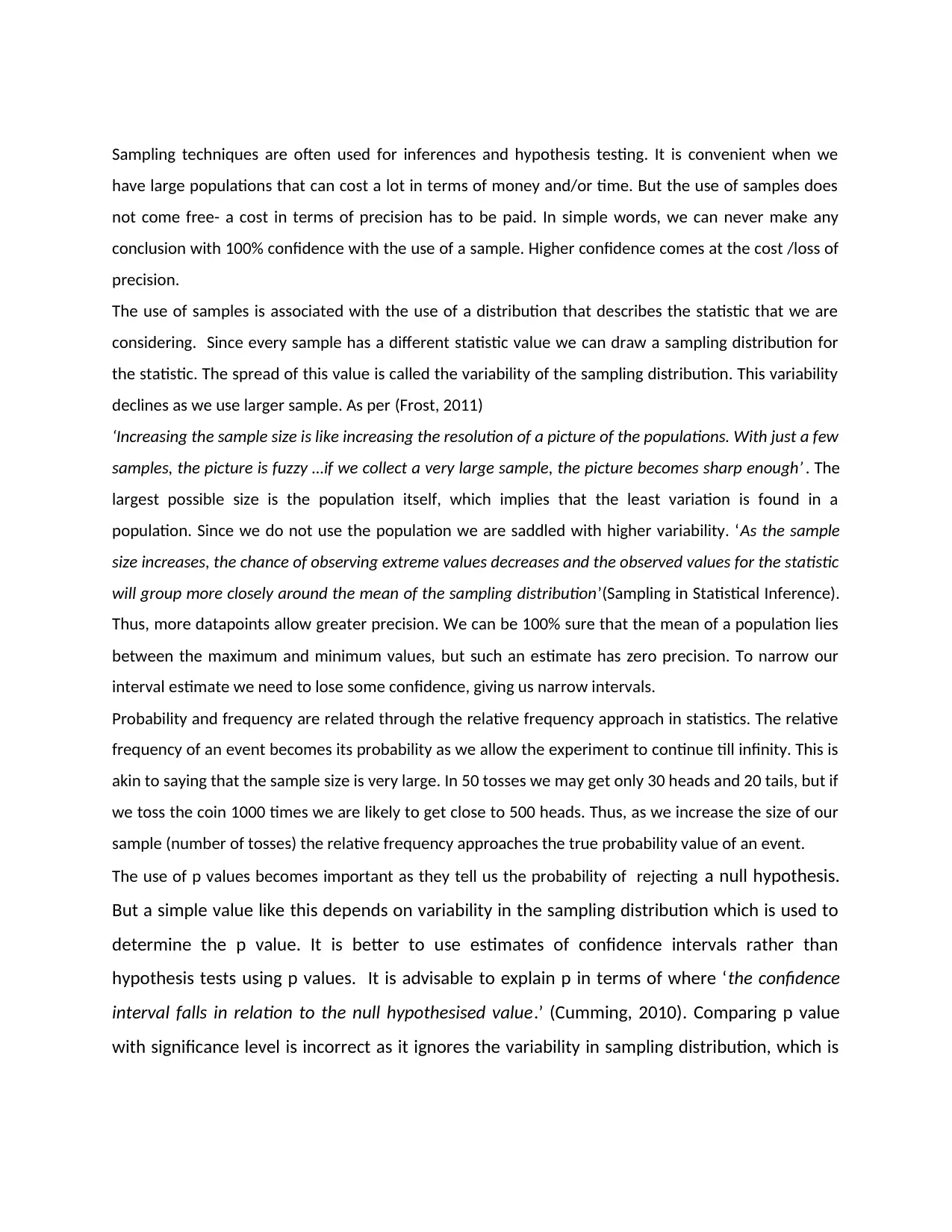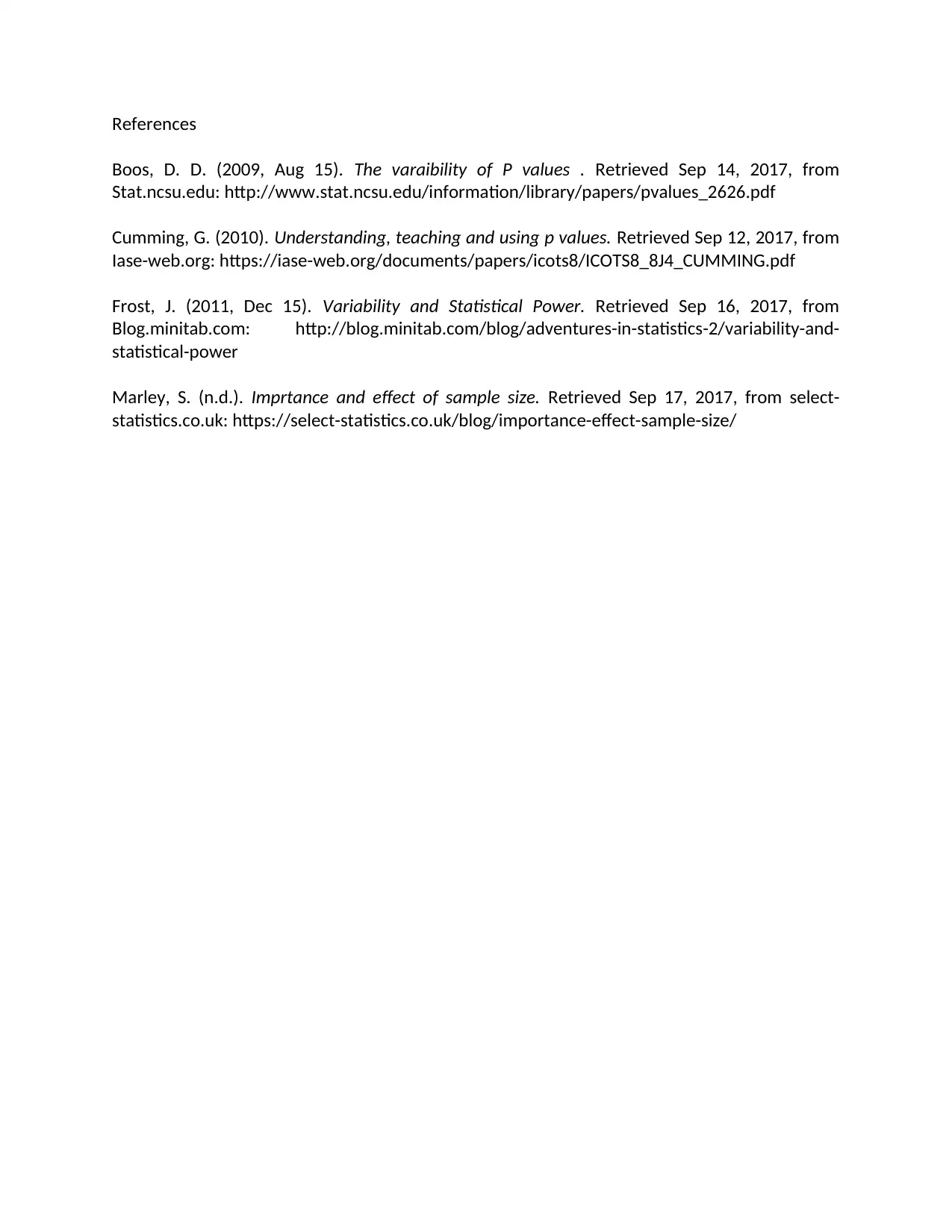Impact of Sampling Techniques on Statistical Inference and Testing
VerifiedAdded on 2020/03/28
|3
|677
|212
Homework Assignment
AI Summary
This assignment delves into the critical role of sampling techniques in statistical inference and hypothesis testing. It emphasizes the trade-off between sample size, precision, and confidence levels. The document explores the concept of sampling distributions, highlighting how larger sample sizes lead to reduced variability and more precise estimates. It also discusses the relationship between probability and frequency, illustrating how increasing sample size allows relative frequency to approach true probability values. Furthermore, the assignment critiques the use of p-values in hypothesis testing, advocating for the use of confidence intervals to account for variability in sampling distributions. The analysis references key research papers and provides a comprehensive understanding of the nuances of statistical sampling.
1 out of 3










![[object Object]](/_next/static/media/star-bottom.7253800d.svg)